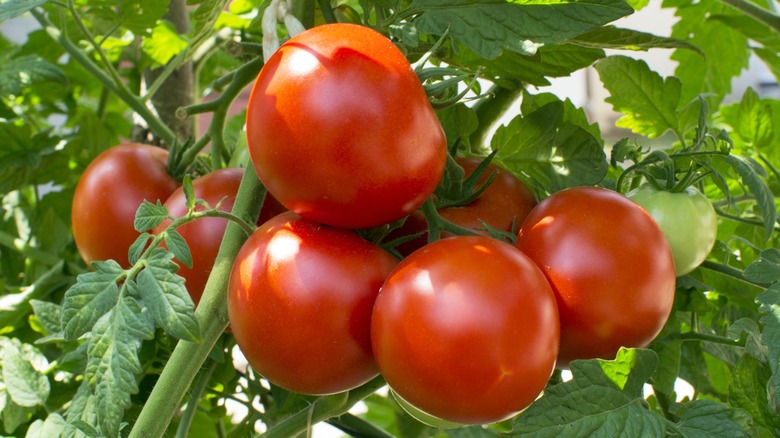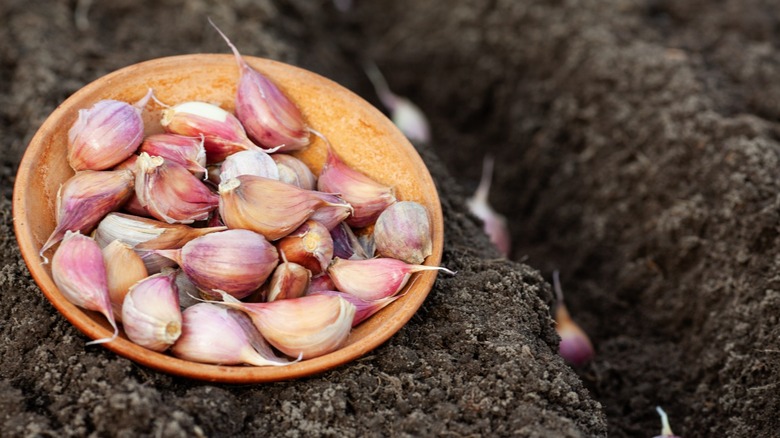The Easy-To-Grow Garden Vegetable That Protects Tomatoes From Garden Villains
Vegetable gardening can benefit your physical and mental health by helping you stay active, giving you a sense of accomplishment, and rewarding you with nutrient-dense food. Growing tomatoes is also a prime opportunity to adopt a growth mindset — essentially, a focus on gaining knowledge. Learning about pests that can damage your garden's tomato plants is a good start. Doing so can help you set up your garden in a way that deters them. Companion planting, aka intercropping or interplanting, is one strategy for your pest-prevention toolbox.
It involves choosing plants that favor similar growing conditions — and, ideally, help each other thrive — and installing them next to each other in your garden. Garlic (Allium sativum) is one of the best plants to grow near tomatoes. In addition to producing another spaghetti sauce ingredient, this low-maintenance plant wards off several pests that can harm your tomatoes. Humans aren't the only creatures who notice garlic's strong, sulfur-heavy scent. Insects are aware of it, too.
Cabbage loopers and root maggots, both of which prey on tomato plants, find garlic's smell especially irritating, so they tend to give these plants a wide berth. Garlic can also discourage spider mites, slugs, and root-knot nematodes from bugging your tomatoes. Garlic's smell even makes the fragrance of ripening tomatoes less noticeable. As a result, moths have a harder time locating the plants' fruit. Though birds can help your garden by eating problem-causing insects, they may sample your tomatoes if they are thirsty. Since garlic is nontoxic, it's a safe way to encourage feathered friends to go elsewhere.
How to grow garlic near tomatoes
Growing your own garlic is fairly easy, but there are a few extra considerations when using it as a tomato companion. When shopping for garlic, select a variety well suited for your geographical region's weather and climate. Hardneck garlic such as the cultivar 'Rocambole' is the best choice if your yard experiences lots of frost, a common situation in USDA hardiness zones 5 and lower. You'll need a softneck garlic such as 'Silverskin' if you live in a warm climate like those found in zones 9 and higher. You can grow either type in zones 6 through 8.
For maximum pest deterrence, also consider planting your tomatoes near herbs that attract beneficial insects. One option, parsley, draws wasps that eat tomato hornworms and aphids. No matter where you live, make sure your garlic and tomatoes get at least six hours of direct sunlight each day. Also, keep an eye on the soil's moisture level. If your garden is too wet, your garlic is likely to rot and your tomatoes may contract black mold, root rot, or other fungal diseases.
Pull weeds near your garlic plants as soon as you can or they might steal the growing bulbs' nutrients and sunshine. Also, make sure that all plants have enough space between them. This helps air circulate and prevents plants from casting shadows on each other, which can shrink the size of your harvest. Garlic cloves should be planted 6 inches from each other, in rows that are at least 12 inches apart. Each tomato plant needs 18 to 24 inches of space around it.

